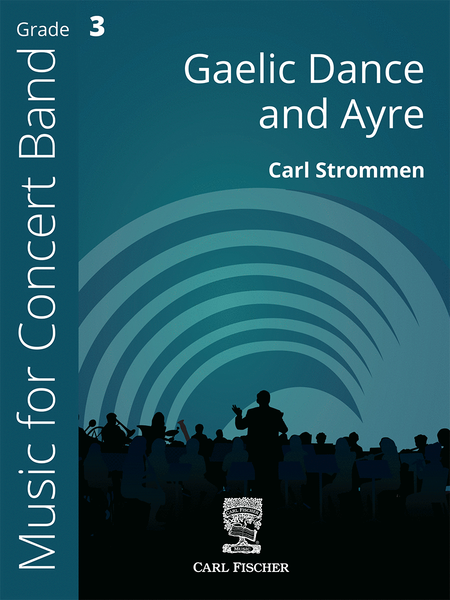Details
Description
SKU: CF.CPS235
Composed by Carl Strommen. Folio. Cps. Set of Score and Parts. 16+2+4+4+4+2+2+4+4+2+2+4+4+4+2+2+3+3+3+3+2+4+4+20 pages. Duration 3:15. Carl Fischer Music #CPS235. Published by Carl Fischer Music (CF.CPS235).ISBN 9781491158081. UPC: 680160916689. 9 x 12 inches.
The adancea is a bright, lively Gigue (or Jig, dotted quarter note = 78), a dance form derived from the German "Geige." After the introduction, the opening theme is stated at m. 9 (winds and trumpet) and re-appears at m. 25 (low brass) along with its variations at m. 33. The ritardando at m. 41 leads to the "Ayre" (Concert Db) at m. 44, with an opening alto saxophone solo which slowly expands to full ensemble at m. 59. "Ayre" presents the conductor with a great deal of latitude in regards to interpretation (ritardando, rallentando, etc.). The opening theme returns at m. 75 and to its conclusion at m. 94.
The "dance" is a bright, lively Gigue (or Jig, dotted quarter note = 78), a dance form derived from the German "Geige." After the introduction, the opening theme is stated at m. 9 (winds and trumpet) and re-appears at m. 25 (low brass) along with its variations at m. 33. The ritardando at m. 41 leads to the "Ayre" (Concert Db) at m. 44, with an opening alto saxophone solo which slowly expands to full ensemble at m. 59. "Ayre" presents the conductor with a great deal of latitude in regards to interpretation (ritardando, rallentando, etc.). The opening theme returns at m. 75 and to its conclusion at m. 94.
The “dance” is a bright, lively Gigue (or Jig, dotted quarter note = 78),a dance form derived from the German "Geige." After the introduction, the opening theme is stated at m. 9 (winds and trumpet) and re-appears at m. 25 (low brass) along with its variations at m. 33. The ritardando at m. 41 leads to the "Ayre" (Concert Db) at m. 44, with an opening alto saxophone solo which slowly expands to full ensemble at m. 59. "Ayre" presents the conductor with a great deal of latitude in regards to interpretation (ritardando, rallentando, etc.). The opening theme returns at m. 75 and to its conclusion at m. 94.

 Share
Share